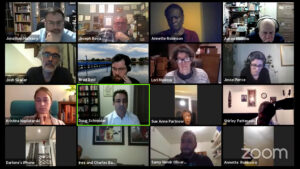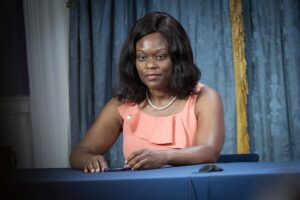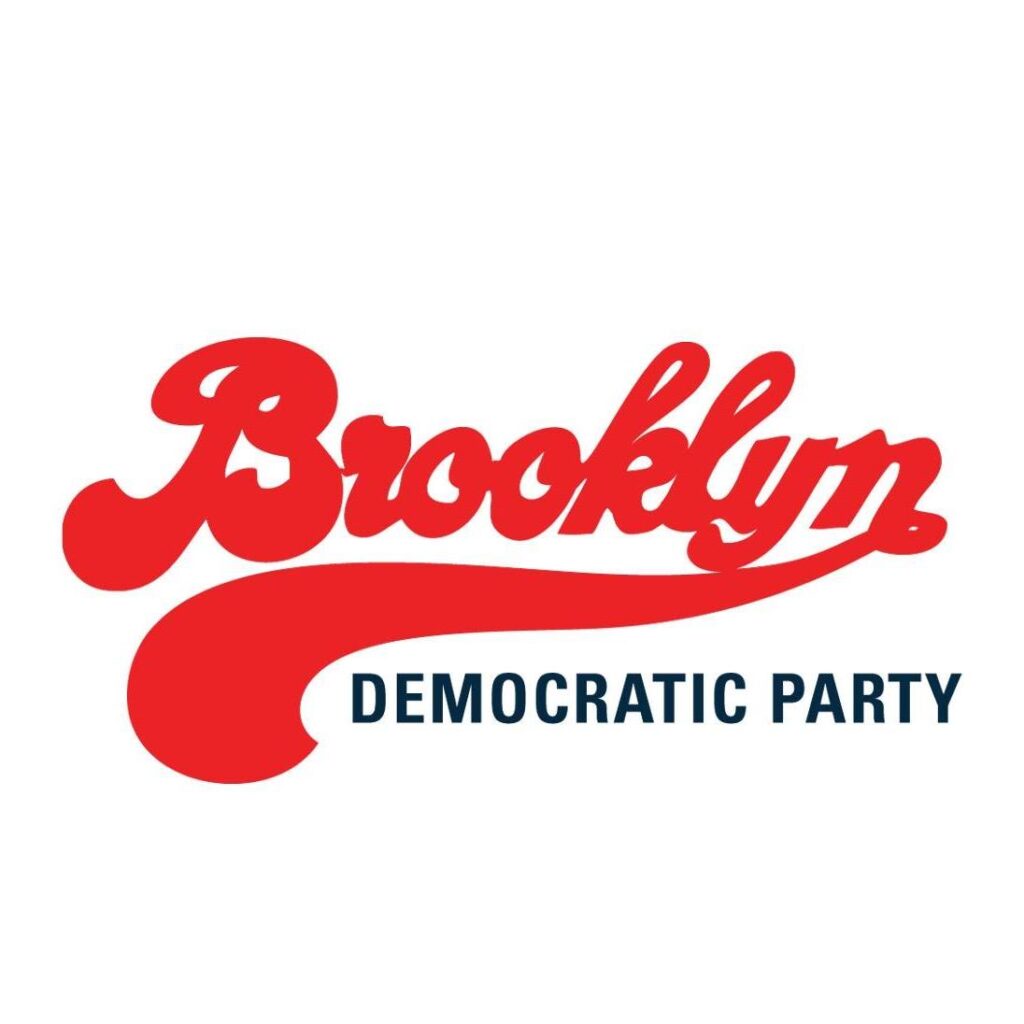(BROOKLYN, N.Y.) — “We need all the county committee members we can get to overcome these fucking progressives,” exclaimed Frank Seddio, former Brooklyn Democratic Party chairman and current district leader, during a December meeting of the party’s executive committee.
It was a dramatic expression of the growing conflict between the Brooklyn Democratic Party and the borough’s newer progressive Democratic organizations over the lack of community political participation.
The Brooklyn Democratic Party, officially the Kings County Democratic County Committee (KCDCC), represents the citizens of Brooklyn and is responsible for making political decisions that impact their lives. The executive committee of KCDCC selects candidates for mayor, public advocate, borough president, district attorney, and borough-wide civil court judges, according to Seddio.
The “progressives,” also referred to as the “opposition” by Seddio, are a collection of grassroots Democratic clubs in Brooklyn that promote greater accountability and inclusivity in local government. The most vocal of the clubs is the New Kings Democrats (NKD), formed in 2008. Other clubs include the Lambda Independent Democrats of Brooklyn (LID), which represents the LGBT community of Brooklyn, the Central Brooklyn Independent Democrats, and the Independent Neighborhood Democrats. While these clubs are not officially part of KCDCC, some of their members serve on the committee and participate in party affairs.

Brooklyn Democratic Party Executive Committee Meeting in Dec. 2020 [credit: Kings County Democratic County Committee Youtube]
‘The position of district leader is not a sexy one.’
Most people in Brooklyn are not up-to-date on the happenings of their local political party even if they consider themselves politically savvy. Because of this, the actions of the longstanding KCDCC have gone relatively unnoticed and unchecked.
Brooklyn has the largest Democratic voter enrollment in the country according to Seddio, greatly outweighing Republican voters. Registered Democrats outnumber Republicans in Kings County by more than seven to one, according to the New York State Board of Elections. This gives the KCDCC a great deal of power in Brooklyn.
The structure of KCDCC allows thousands of citizens to fill general member seats throughout the borough. But, the majority of the seats are left unfilled, leaving decision-making to the executive committee, which is composed of two district leaders from all 21 assembly districts and the elected party chairperson.
“The position of district leaders is not a sexy one,” said Julio Peña III, district leader for Assembly District 51. “Who cares about a volunteer, unpaid position that doesn’t have a lot of responsibility?”
This lack of participation has allowed the executive committee to control the narrative of KCDCC and make decisions in a vacuum. This was the case until some members of the community became more aware of how KCDCC was operating. These members wanted to see more representation in the party and some formed progressive clubs, like NKD or LID.
“It shouldn’t take this level of time and commitment to understand how the party works, to feel like you’re represented by someone who cares about you,” said Jessica Thurston, NKD’s vice president of political affairs.
The progressive clubs share the goal of increasing political participation in KCDCC, which means filling as many of the general member seats as possible. Without active participation, district leaders use proxy votes when making decisions, which do not necessarily reflect the best interest of their constituents.
The Disproportionate Use of Proxy Votes
“Any regular district leader can get as many as 250-300 [proxy votes], depending on how well he has filled his county committee,” said Seddio. Some district leaders, especially those who are more closely aligned with the party “machine” will use their mass of proxy votes to pass votes in their favor.
Peña recounted an instance when a majority of the people present during a county committee meeting did not vote in support of the KCDCC-endorsed candidate. “But because the folks who proxied over their vote, all proxied it over their vote to one person, the county-endorsed candidate won the vote,” he said.
Accordingly, district leaders loyal to the machine can have a monopoly over KCDCC’s decisions by using their proxy votes. Their, “monopoly made it so that there wasn’t a real [democracy], there was no one keeping them honest,” said Matthew Cowherd, president of NKD from 2008 to 2011.
As a result, it is challenging for progressive district leaders to influence KCDCC decisions. “They get 300-400 [proxy votes] from the whole borough. I get 280 from my district alone,” said Seddio. He explained how district leaders loyal to the machine can gather a couple hundred proxy votes from their respective districts alone. This greatly outweighs the number of votes NKD or other clubs can get. “Obviously they can’t win,” he said.

Current Brooklyn Democratic Party Chairwoman Rodneyse Bichotte [credit: New York City Mayoral Photography Office]
Elections for positions in KCDCC, such as district leader, are held every two years, but there are no limits for how many terms one may serve. Because of this, progressives argue that low voter turnout and the use of proxy voting works in favor of machine incumbents.
“They see any participation as threatening their power,” said Alex Low, president of NKD from 2011 to 2012.
The KCDCC also fills vacancies left when an elected official resigns, “or in New York’s case are indicted because of corruption,” said Peña, by holding special elections. “One in three elected officials in New York State were elected in a special election,” according to Peña.
Special elections allow the “party boss,” the party chairperson, to hand-select replacements for the vacant position without much or any voter participation, explained Cowherd.
“I think as a result of our activism the party leadership has doubled down on its efforts to be really gross, really discriminatory, really exclusive, bending rules,” said Thurston, “but the more they do that, they’re proving our point.”
Evaluate Your Feelings about Judicial Nominees
An important responsibility of the KCDCC executive committee is to select judges to Brooklyn’s civil, surrogate, and supreme courts.
The process of selecting judges starts with candidates declaring they are running to the executive committee, according to Seddio. From there, the committee will “evaluate their feelings” about the candidates and vote. Whichever candidate receives the most votes wins county-wide support. A majority of the time the vote would be unanimous because of the disproportionate amount of proxy votes district leaders can get.
The lack of participation in this process has allowed the executive committee to favor certain judicial nominees, drawing in criticism from the progressives.
“In a lot of cases the judges weren’t chosen on their merits, they were chosen based on their loyalty,” said Low. “In some cases, there were candidates who were judged as unsuitable by the bar association.”
“They’d have to basically be paying contributions, make sure that they weren’t going to rock the boat, be very much in hock to the corrupt machine,” said Low.
In some instances, particularly in the surrogate courts, the judges decide which lawyers get which cases. This becomes a problem when the courts are, “constantly assigning a law firm that is friendly with the county,” said Peña.
Video: How the Kings County Democratic County Committee Works
Multiple Points of Contention
The tensions between the machine politicians and the progressives came to a head this past December.
On Dec. 3, frustrated by the rules, 12 committee members sued KCDCC accusing the party of violating their election rights by unlawfully modifying party rules which would allow the executive committee to fill vacancies without a vote by the full county committee. With litigation pending, tensions in KCDCC were high leading up to the annual committee meeting two weeks away.
On Dec. 16, at the KCDCC committee meeting, a voting discrepancy was found after the first vote. Hours later it was determined that one member had more proxy votes than they should have. A new set of rules were passed, including one that would limit the number of proxy votes any member can have. After 13 hours, a follow-up meeting to elect party members was scheduled and the meeting was adjourned.
At the follow-up meeting on Dec. 21, a machine party-hired parliamentarian overturned the new party rules passed at the previous meeting, resulting in over one hundred members “walking out” of the virtual meeting in protest.
Out in the Open
With litigation pending and the explosive annual meetings over, the machine still dominates the KCDCC but it is now in the spotlight.
Now that the operations of KCDCC are out in the open, members of the progressive clubs hope the party will become more transparent and inclusive. That change must come from the party itself and not from independent clubs, according to Jared Arader, president of LID. “Because when an independent club is doing it, they’re automatically deemed as outsiders,” he said.
“I think the most remarkable change that the reform movement has been able to make is that more people have their eyes on the County party,” said Arader. “Now the county party doesn’t get to exist under the radar.”


